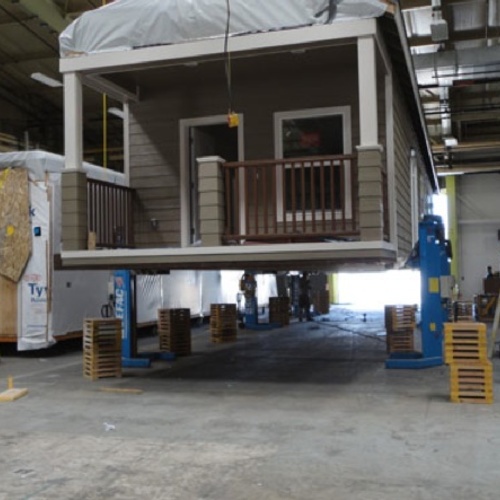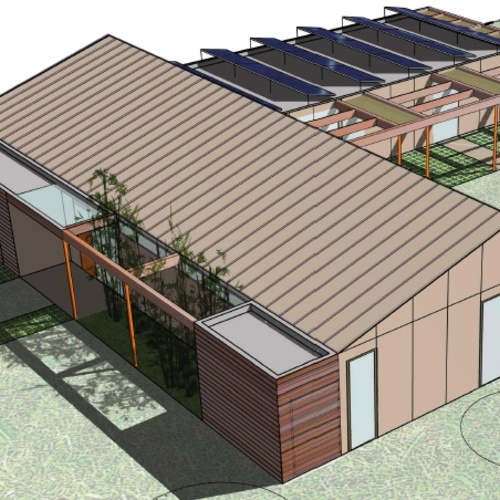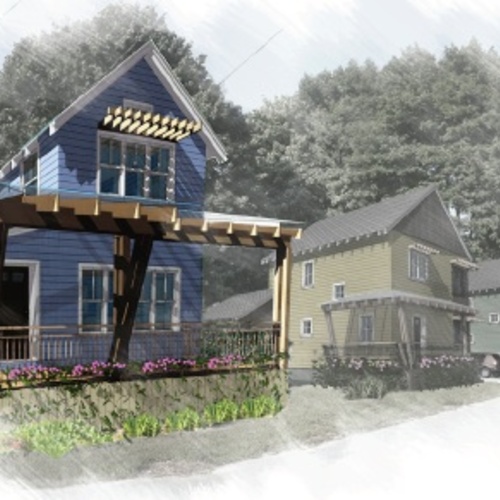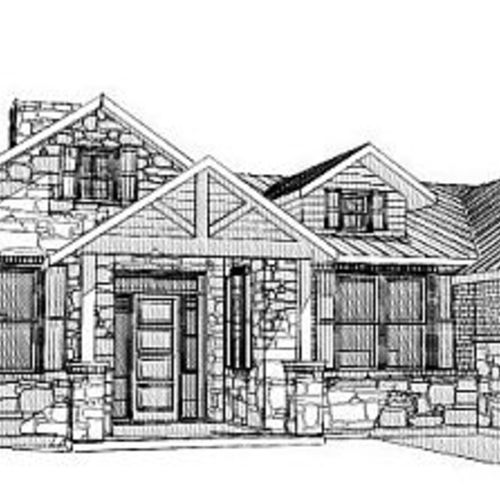Image Credit: VerEco Homes
Image Credit: VerEco Homes A still from a VerEco video showing the model home just before it was hauled to its exhibition site in Saskatoon. The VerEco model home beginning its journey from the NuFab Building Products manufacturing plant, in Vanscoy, Saskatchewan, to Saskatoon, about 40 miles to the northeast. The house is slated to be moved in August 2011 to a rural site about a half-hour's drive from Saskatoon where it will be secured to a walkout foundation.
When deep winter stalks Saskatchewan and the rest of the prairie in central Canada, it’s a mild day if the temperature tops 20 degrees Fahrenheit. Which means October 26 probably was a pretty good time for VerEco Homes, designer of energy efficient “ready to move” houses, to install a demonstration home at the Western Development Museum in Saskatoon, a showcase for regional history and economic development.
The three-bedroom, two-bath demo, with 1,220-sq.-ft. of interior space, features a well-insulated shell (R-60 walls and an R-110 attic), metal roof, triple-glazed windows, a low-wattage heat-recovery ventilator, solar hot water, and a 4.4 kW solar power system – all of which, during the cold weather, are expected to demonstrate how the VerEco construction system can bring the home to net-zero-energy performance even amid a hostile chill.
Compact, in four configurations
In an email to GBA, VerEco Home’s president, Ronn Lepage, noted that the house has almost no hallways. Its great room is a flex space that will be used as a dining room and a family/living room. The utility room was removed and a utility closet was placed over the stairwell (it encloses the HRV and a water heater, but the house has no furnace or air conditioner). The house also shows off a variety of floor finishes and materials, from bamboo to linoleum to concrete tile.
The VerEco website, which is still under construction, lists four basic house designs: the VerEco Home (the version now on display in Saskatoon), which measures 1,440 sq. ft. to the exterior and is priced at $124 U.S. per square foot (about $178,200); the three-bedroom Executive, with 1,872 sq. ft.; the Cottage, with 1,024 sq. ft.; and a 1,732-sq.-ft. two-story home suitable for urban settings. Solar hot water and solar power systems are available at extra cost.
VerEco has contracted with NuFab Building Products, a regional specialist in ready-to-move homes and prefabricated building components, to construct its houses. The display home is expected to remain on the museum grounds until August, when it is scheduled to be moved to Sarilia Country Estates, about 30 minutes from Saskatoon in the North Saskatchewan River Valley. Lepage points out that the home’s foundation will feature a walkout basement, adding a bit to the foundation costs, which are expected to be about $30 per square foot.
Weekly Newsletter
Get building science and energy efficiency advice, plus special offers, in your inbox.
















8 Comments
Thermal bridges!!
In pic #1 at the bottom of the blog, we see several dozen metal straps hanging down from the home. These straps are meant to be fastened to the interior walls of a PWF foundation to help resist lateral soil forces. Seems they have a lot to learn about thermal bridges.
What thermal bridging?
Are you sure the straps don't go on the exterior side of the foundation insulation? If so, there is no thermal bridging.
Bob
See page 8 of this
Bob
See page 8 of this guide...
http://tempsite.townofunity.com/pdf/permits/preservedwoodguide.pdf
I do hope I am wrong about this but the framing straps look to be spaced at about one foot centers which would match up with studs in a PWF wall...
pwf straps
I'm sure that to create the superinsulated house, there will be a rigid application to the exterior, eliminating any sever thermal bridging. that, or, more likely, a double exterior wall. The straps would be fastened to the inside of the exterior wall. You would still have a bit through all the plates this way. As a friend of a few people involved in the project, I may have the opportunity to view the home at Sarilia before it is finished or sold. we can only wait and see!
Hope you are right Eric, but
Hope you are right Eric, but from the photos, it looks like the straps are covered only with a WRB and what looks like vinyl siding. There probably is a second wall allright but it must be to the interior.
Tie down straps
Thanks for bringing this up - I had not thought much about it.
The tie downs are unique to the Ready To Move industry and are designed to attach the home to the foundation. We are planning to use a prefab concrete foundation. The prefab concrete walls as built will provide about R10 of insulation. The exterior walls of the foundation will be insulated with another R32 using a 2x4 wall and a four inch space with two layers of R16 fiberglass insulation. The straps are normally tied to the inside of the foundation wall and that would cause a thermal bridge. After your comments, we contacted the builder to ask if we could fasten to the outside of the foundation - they are checking with their engineers on this but they don't anticipate any problems.
Thx for your input.
Ronn
Happy to hear that you
Ronn
Happy to hear that you have a solution. I will have to check out your show home next time I am in Saskatoon. GO RIDERS
Foundation insulation
Wonderful to see someone in the RTM business is using all the NZE or close to PassiveHaus designs. Why not use ICF foundation or Rigid SM on the exterior of the concrete foundation? Have you consider some form of closable insulating shutters for the windows. The exterior doors do not use any sort of sluice to reduce heat loss through a single door. Initially single doors are fine but as the seals age, they just do not seem to be a good solution. AKA Craik Sask. building.
BEST football fans ever.
Log in or create an account to post a comment.
Sign up Log in